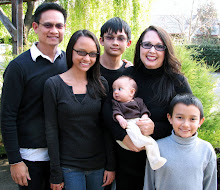learning to be, and to be a teacher
With a five-week summer training program at Rudolf Steiner College completed, I am taking this Sunday morning to breathe, to fill a request for over easy eggs from my youngest son, and well, of course, to reflect-blog!
I began my teacher training last year, and this summer was the second in a four-year summer program; my cup is half full. Oddly, it feels both too much and not enough.
(Break for making breakfast.)
Steiner's work in anthroposophy and Waldorf education is monumental. His philosophical ideas and ideals are imbued with science and spirituality that reach out to the cosmos. His advice and teachings have an interdisciplinary range that is vast. His work is informed by multicultural forces of past, present, and future. In our training this summer, we are in our average day giving quality to the consciousness soul, then telling a story about giants, fairies, and queens and how to present with reverence the pentatonic flute to a first grader, then doing a tinikling dance with bamboo, then singing in three part harmony in Hebrew, then doing free-hand geometry, then trying to delineate the four temperaments,then proving the Pythagorean theorem, then reciting Shakespearean sonnets, and finally, in a refreshing and joyful out of character experience with Antje Staub, ending the day with a rap song about antipathy and sympathy!
And this is why processing is so important. The students of the program, teachers in training, have received a generous heap of salad greens to digest, beautifully prepared and presented by our caring intructors. We ate up our plates, wishing for more time to enjoy it. But aside from the lingering flavors on our taste buds, all the goodness of the meal is inside us. We must now allow ourselves to process, to metabolize, to let the nutritive forces of the training to find their way into our muscles and nerves.
In so doing, in entering into the digestive phase, we can hear the quiet murmuring of our bodies, and if you really listen, there is one truth, one maxim, one directive: KNOW ONESELF. In ancient Greek, this aphorism was inscribed on the Temple of Apollo at Delphi. It has been the slogan of the enlightened for over 4000 years, most likely even further back when early humans, without speech or the written word, just
knew. Floating in the ether of too much and not enough, it is best to land on the ground of the SELF. One classmate, Hillary, in a moment of clarity we all shared, said, "I am enough." But the feeling of not being prepared, which we also all shared, especially for those of us about to dive into teaching this Fall, makes one doubt oneself. It is not easy to hold back the tides of insecurity, which can rise and engulf the ground of the self. It is not enough to be barely holding one's head above the water. So how do we have the feeling of being enough?
One must find calmness in simply
being. To just be. To be in the realm of ONENESS, the core of the SELF. (The SELF is one of the
five spheres of Waldorf education.)
Connecting with the inner self, and being so fully at peace with what is there, I believe will give us the freedom to be fully present and fully in the moment with the children. This is what I love about the Waldorf way: my being, which holds the power of the cosmos, is blessed to teach the children. Not to teach the curriculum, or to be tethered to some prescriptive standard. But to be the author and artist, expressions of the self, to be a teacher. On a practical note, choose what works for you. Gather your bag of curriculum concepts, your bag of Waldorf goodies, then create from the self. On an esoteric note, meditate. According to Chelsey, a friend and classmate, "Inner work is our battle cry!"
Whether you will be in a Waldorf classroom, a homeschooling parent, or are in a quest for inner enlightenment, it all begins with the self.
It all begins now.
(Break for finishing my cup of coffee.)
It all begins now.
(Break for unpacking boxes from moving to our
new place in Davis!)
It all begins now!


















